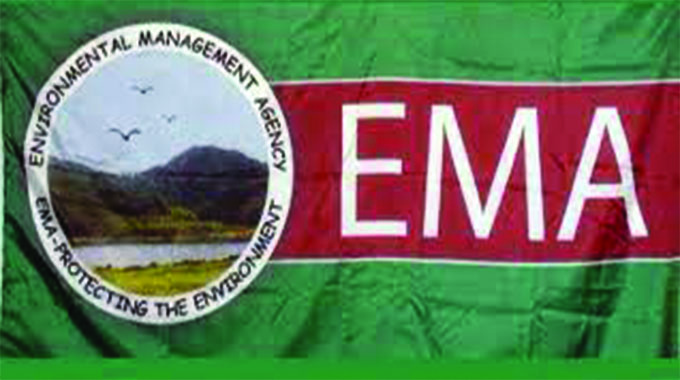EMA acts on discharging of raw effluent into water bodies

Yoliswa Dube-Moyo, Matabeleland South Bureau Chief
THE Environmental Management Agency (EMA) has in the last 12 years issued 419 orders to stop various municipalities from discharging raw effluent into water bodies.

Environmental Management Agency (EMA)
EMA maintains an extensive surface water quality monitoring network along major and minor water bodies across the country, which includes streams and rivers as well as dams and lakes.
There are seven water catchments in the country namely Runde, Sanyati, Manyame, Gwayi, Umzingwane, Save and Mazowe.
A total of 346 active ambient water quality monitoring points are distributed within the seven catchments and these are monitored on a monthly basis under a programme which involves the collection of water samples, on site water quality tests and laboratory analytical tests.
Water quality refers to the chemical, physical and biological characteristics of water.
It is a measure of the condition of water relative to the requirements living organisms and humans need.
Matabeleland South environmental education and publicity officer, Mr Simon Musasiwa said ambient water quality monitoring is important in the prevention of diseases.
“It seeks to make a measurement of the pristine conditions of water bodies.
The term ambient refers to the immediate, undisturbed surroundings of the environment.

biological oxygen demand (BOD)
An ambient monitoring exercise measures concentrations of various chemical water quality parameters which include biological oxygen demand (BOD), chemical oxygen demand (COD), dissolved oxygen (DO) pH, nitrates and phosphates,” said Mr Musasiwa.
He said these parameters provide essential information on the state of a water body.
“They are also used to assess the level of water contamination or pollution and its fitness for various purposes such as drinking, recreation, irrigation and aquatic life support.
Ambient water quality monitoring assesses the impact of human activities within a catchment area.
These activities vary from manufacturing, mining, construction, runoff from agricultural activities, urban runoff to the discharge of treated and untreated sewage into water bodies.
Information generated from ambient water quality monitoring is crucial for water resource management, planning and decision making,” said Mr Musasiwa.
He said the process characterises water and identifies changes or trends in water quality over time.
“It also identifies specific existing or emerging water quality problems, it gathers information for the design of specific pollution prevention or remediation programmes, it determines if compliance with pollution regulation is being met or if one implementation of effective pollution control action is needed,” said Mr Musasiwa.
He said water and effluent discharge monitoring falls in line with the Agency’s mission to regulate, monitor and promote sustainable management of natural resources and protect the environment.
“Water is an essential resource for life and good health.
The Agency is always monitoring water quality and penalising offenders in line with environmental legislation.” — @Yolisswa










Comments